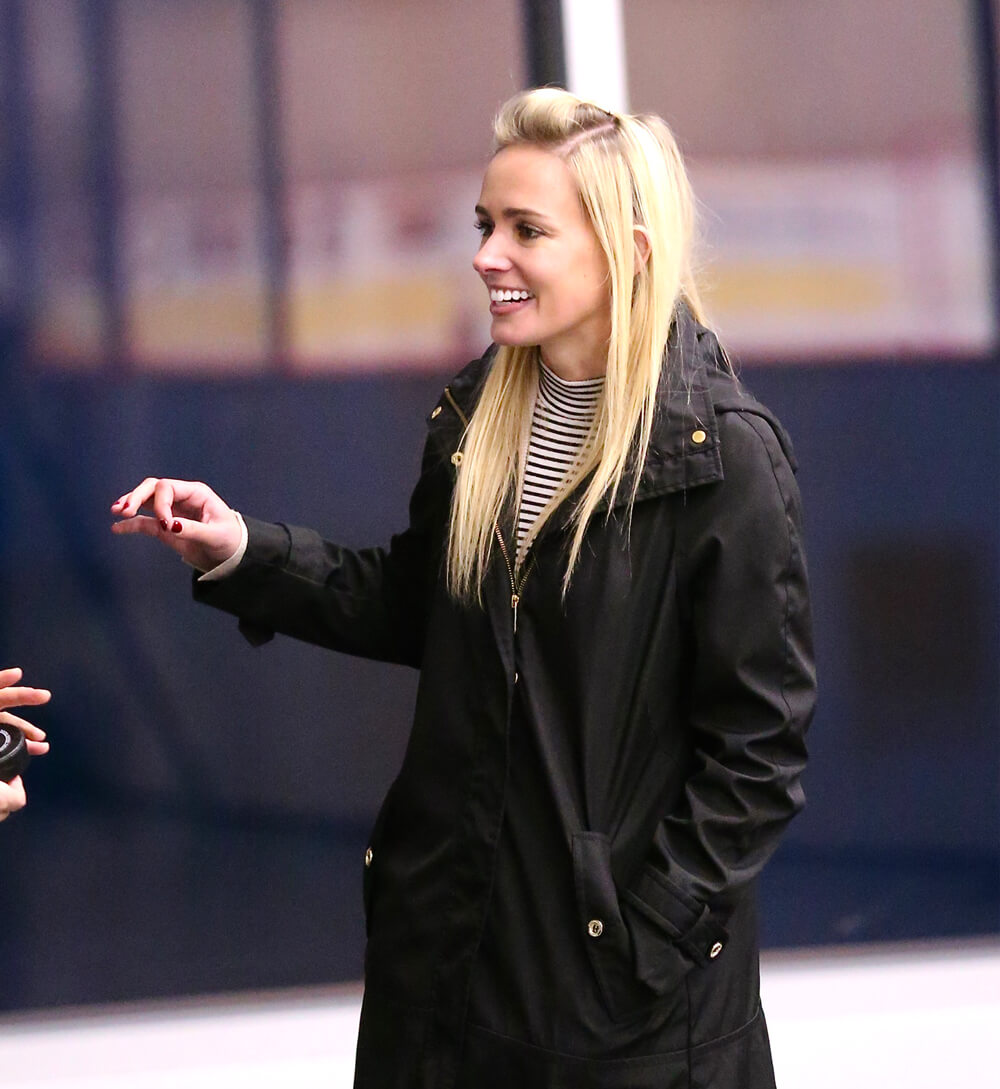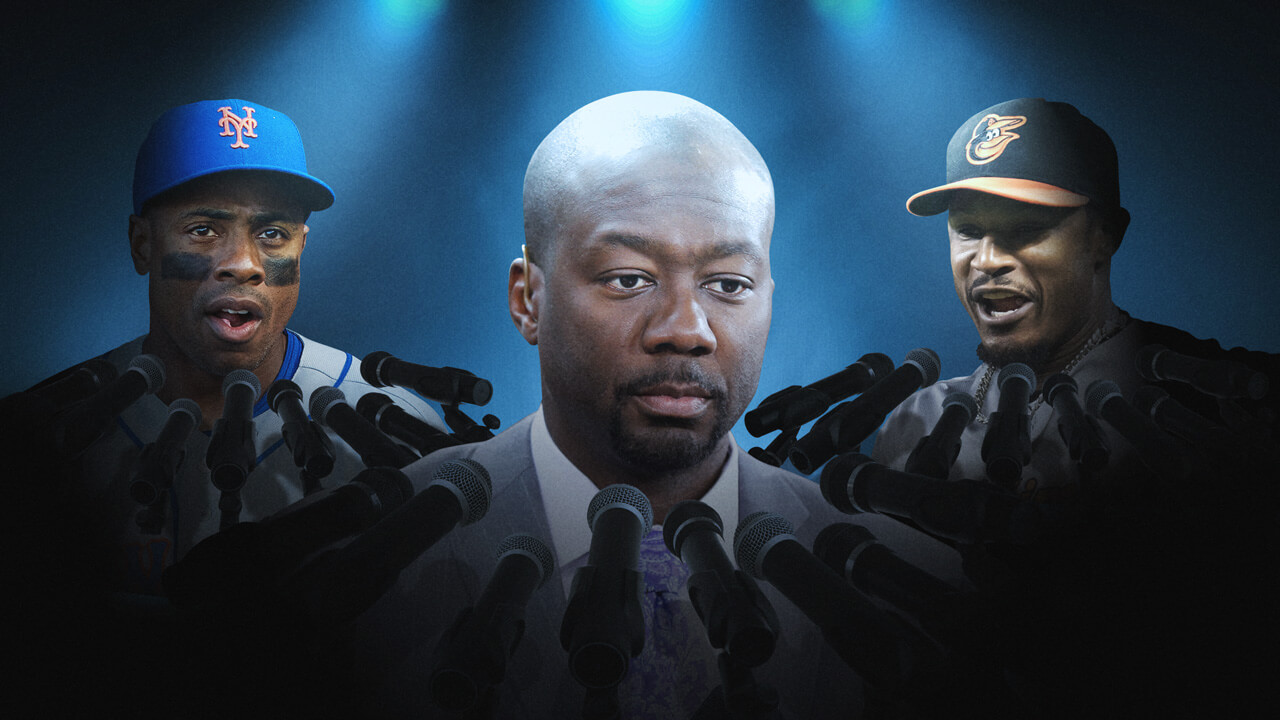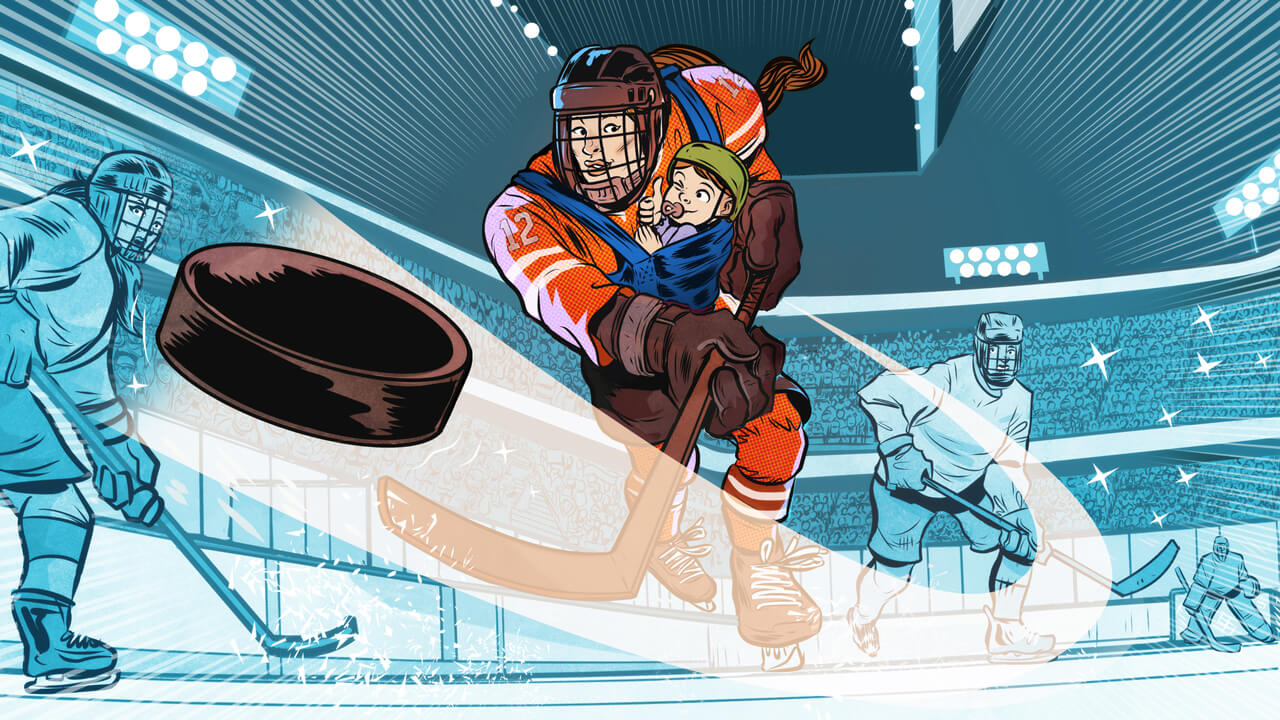Rylan didn’t for a second consider ceasing operations. Instead, the NWHL grew this season from a 16- to a 24-game schedule. It continued to hire women in power positions, and currently employs all female GMs. It upped players’ salaries from the season previous, without altering each team’s $150,000 salary cap. The NWHL achieved that through a 50/50 revenue share deal that splits all media and sponsorship dollars evenly between the league and the women who play in it. “The way it was brought [by Rylan] to the PA was, ‘We understand that salaries aren’t where they need to be, and we want to eventually make this a full-time job. But at this point, this is what we can definitely promise,’” Packer says. “‘And then through sponsorship, as those grow, you’ll get paid just as much as we will.’
“There’s a mutual buy-in now with the revenue share, but also just with the climate of women’s hockey that to grow, we have to do it together,” the NWHLPA’s executive director adds. “It can’t be one versus the other.”
As of mid-February, Packer says the 50/50 revenue share had netted each player an additional 26 per cent of her salary, a number that’ll increase at the end of the season, when all final media and sales dollars roll in. “It’s absolutely massive,” Packer says. It means that as of mid-February, Riveters all-star Madison Packer makes an additional $3,120 on top of her base salary of $12,000. The league’s highest-earners, at a $15,000 base salary, earn an additional $3,900.
Fratkin was at Harvard recently for a presentation alongside athletes from the NFL, WNBA and NBA, and they were discussing their respective league’s pay structures. “The NFL guys were like: ‘Wait, you have a 50/50 revenue split? How the hell do you guys have that?’” Fratkin says. “I think as a player you may not immediately know what it means or how big it is, but you talk to other athletes, they’re kind of like: ‘Wow.’ The fact our commissioner’s willing to do that, I think it shows that she wants the league to grow and she also wants the players to benefit. As a player, that’s absolutely huge. And it shows you a lot about what Dani is trying to do as the figurehead of this league. I think people need to understand that she’s not tearing down women’s hockey. She’s helping women’s hockey, and this year is proof in the pudding.”










